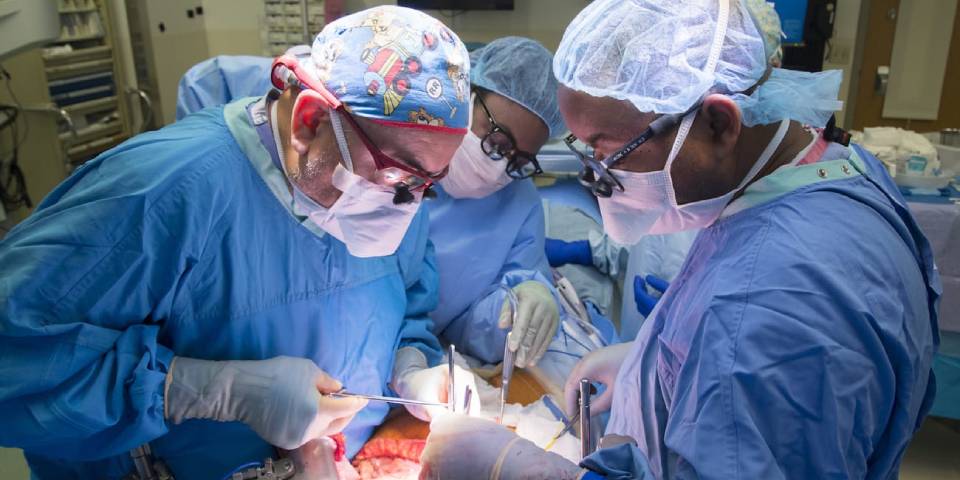
What is a liver transplant?
A liver transplant is a surgical procedure to replace a failing liver with a healthy one that comes from another person’s body. You can receive a whole liver from a donor who has recently been pronounced dead, or you can receive a part of a liver from a living donor. A divided liver can grow back to full size in both your body and the living donor’s body.
When Is a Liver Transplant Needed?
The liver is your largest internal organ. An adult weighs about 3 pounds. It’s just below your diaphragm on the right side of your belly. Your liver does many important things, including making proteins and breaking down nutrients from food to help your body make energy.
You might need a transplant if your liver doesn’t work the way it should. This is called liver failure.
Liver failure can happen suddenly as a result of viral hepatitis, drug-induced injury, or infection. This is called acute or fulminant hepatic failure.
It can also be the result of a long-term problem (chronic). Conditions that can cause chronic liver failure include:
- Chronic hepatitis with cirrhosis
- Primary biliary cholangitis is a rare condition in which your immune system destroys your bile ducts
- Sclerosing cholangitis, scarring, and narrowing of the bile ducts inside and outside your liver, causing bile to back up
- Biliary atresia, a rare liver disease that affects newborns
- Alcohol overuse
- Liver cancers such as hepatocellular carcinoma
- Wilson’s disease, which causes unusual levels of copper throughout your body, including in your liver
- Hemochromatosis, in which your body has too much iron
- Alpha-1 antitrypsin deficiency is an unusual buildup of a protein called alpha-1 antitrypsin in your liver, resulting in cirrhosis
Which Disorders can be treated with Liver Transplant Surgery?
Liver transplant surgery is usually dedicated for:
- Liver failure (acute or chronic).
- Primary liver cancer (hepatocellular carcinoma).
It’s usually a last-resort treatment. The competition for donor’s livers is high, and even if you do get one, it won’t always cure the underlying disease. Some chronic liver diseases will simply resume their destructive work on the new liver. But since these diseases tend to progress slowly, starting over with a healthy liver can buy valuable time.
Acute liver failure:
Acute liver failure occurs when a previously healthy liver has severe damage. The damage may come from toxic poisoning or infection. If you have acute liver failure, you will have symptoms of liver insufficiency, evidence that your liver has stopped working. This is an emergency. Some livers recover from acute liver failure, but others don’t.
Chronic liver failure:
Chronic liver failure is the end-stage of chronic, progressive liver disease. It usually means that too much of your liver tissue has been replaced with scar tissue, which has no blood flow. This is also called cirrhosis of the liver. When your liver functions begin to break down, you’ll show signs of “decompensated” liver disease.
Primary liver cancer:
The type of cancer that begins in your liver is called primary liver cancer, or hepatocellular carcinoma. If cancer doesn’t spread beyond your liver, removing the liver can remove cancer and cure it. Sometimes your provider can remove just a piece of your liver with the tumor in it (partial liver resection). But if your liver is in poor condition, a transplant may be needed.
How much liver is needed for a liver transplant?
Most adults need only one liver lobe (hemisphere) from a donor. If the donated lobe is healthy, it will regenerate to its former size. Dr. Bhushan Chittawadgi often selects the right lobe for transplant because it’s a bit bigger, but in a pinch, the left lobe will do fine too. Most children only need about 20% of an adult liver, which is about the size of one of the left lateral segments.
When Will I Be Able to Go Home After a Liver Transplant?
The average hospital stay after a liver transplant is 2 to 3 weeks. Some patients go home shortly, but others have to stay longer.
The nursing staff and your transplant coordinator will start to get you ready for discharge soon after you move from the intensive care unit (ICU) to the regular nursing floor. They’ll give you a discharge manual, which reviews much of what you need to know before you go home.
You’ll learn how to take new medications and how to check your blood pressure and pulse. You’ll also learn the signs of rejection and infection, and you’ll know when it’s important to call your doctor.
Many people have to be admitted to the hospital again, especially within the first year after a transplant. This is usually for the treatment of a rejection episode or infection.
